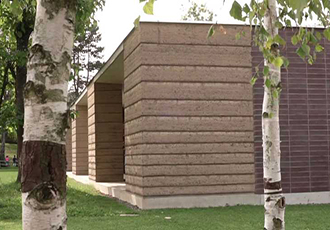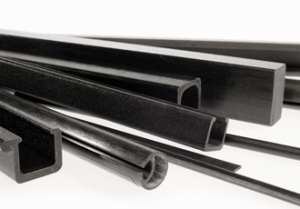Building with excavated material

When modern humans build a structure, it usually works like this: they dig a pit, transport the excavated material away in a lorry and deliver tonnes of sand, gravel and cement in its place. This is mixed with water to create concrete, which is used to build the foundations and the house. The latter is then fitted out primarily with complex building technologies to compensate for any losses in comfort.
We want to show that there’s another way to do this. Specifically, by making better use of the excavated material – the inorganic part of the soil – on which we build our houses.
Excavated material can help us tackle a number of the problems the construction world is currently facing, from resource scarcity and climate change through to indoor climate control and its often-unsatisfactory building systems.
With this in mind, the Chair of Sustainable Construction is collaborating with IG Lehm, the association for earth construction in Switzerland, to organise the exhibition THINK Earth! in the main hall at ETH Zurich. The exhibition introduces earth as a building material, explains the relevant construction techniques and offers examples of contemporary earthen architecture.
Earth has been a reliable building material since human beings first left their caves. Indeed, earthen construction may well be the oldest building technique in the world. Unfortunately, it is no longer the most important, particularly in modern cities.
Today, we build primarily with wood, brick, steel and concrete, but rarely with mud – too rarely, in our opinion. As a construction material, earth is similar to concrete, except that the gravel and other components are bound together by clay, rather than cement.
But there are some important differences. Examine the issue of resources, for example, and a paradoxical situation emerges: almost everywhere in the world, the construction industry is busy trying to secure enough good sand and cheap gravel for the production of concrete – an energy-intensive process.
Sand, a seemingly endless raw material, is being dug away from rivers, lakes and coasts, and is slowly but surely running out (see the following blog entry in German).
While this is happening, we are removing a perfectly suitable building substrate from our cities and transporting it away at great expense to landfills and gravel pits. If we made greater use of the excavated material in construction instead, we would not only short-circuit this supply chain, but also spare our sand and gravel resources and save energy and CO2.
Dry air is an increasingly common problem for residents of new buildings. Problems with humidity and the indoor climate are caused by high-density construction methods and controlled ventilation and heating systems. The most common response to this deficiency is to use as much sophisticated, complex technology as possible.
However, using earth as plaster can regulate air humidity naturally and make for a significantly more comfortable indoor climate. Rather than viewing earth as a full and sufficient replacement for structural building materials such as concrete, we should see it more as an alternative for building services technology.
At the extension of Triemli Hospital in Zurich, for example, a mud plaster works alongside the standard building system to provide a regulated indoor climate. Ricola’s Kräuterzentrum (herb centre), on the other hand, is quite different: there, the delicate herbs are stored at the correct humidity between massive earth walls, without using any other building systems.
We are convinced that mud is a traditional building material which is reclaiming its place in the modern world. But there are still hurdles to overcome; old building techniques are no longer compatible with the requirements of today's construction industry (level of comfort requirement, speed of construction, costs).
Researchers around the world are currently working on precisely this issue. Empa, for example, is developing mud plasters with aerogels in order to further improve the humidity-regulating properties of the earth.
In France and Switzerland, innovative approaches to reinforce earth are being devised using prestressing. And at ETH Zurich, we are working on a liquid earth that can be poured into formworks in the same way as conventional concrete. This would significantly reduce the working costs of building with earth.
If you are interested in earth architecture, you are invited to visit Think Earth!.
Similar articles
More from ETH Zurich
- Building with excavated material 25th October 2017
- Lattice structure can absorb wide range of vibrations 29th July 2016
- A new class of alloys 14th August 2015












Write a comment
No comments